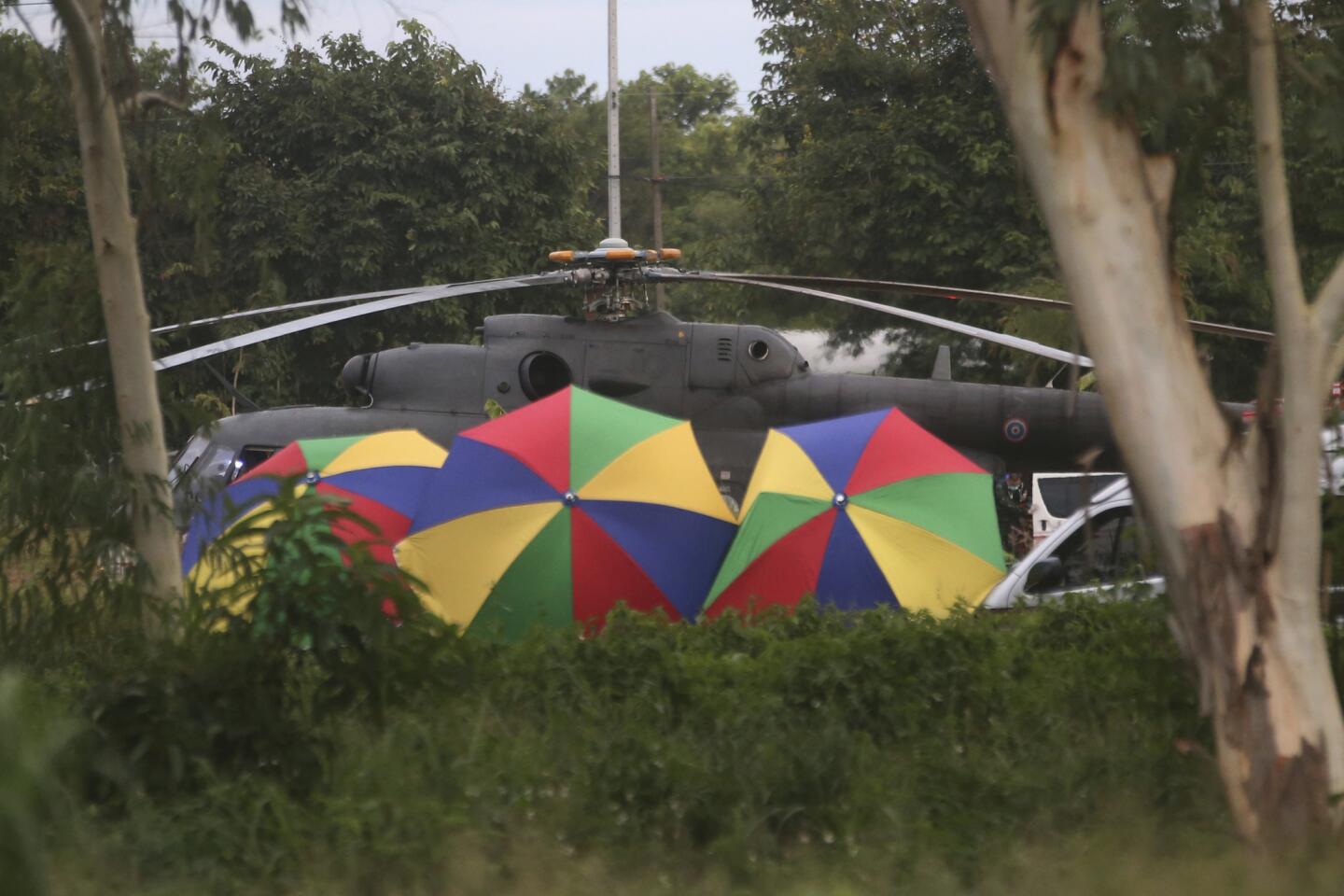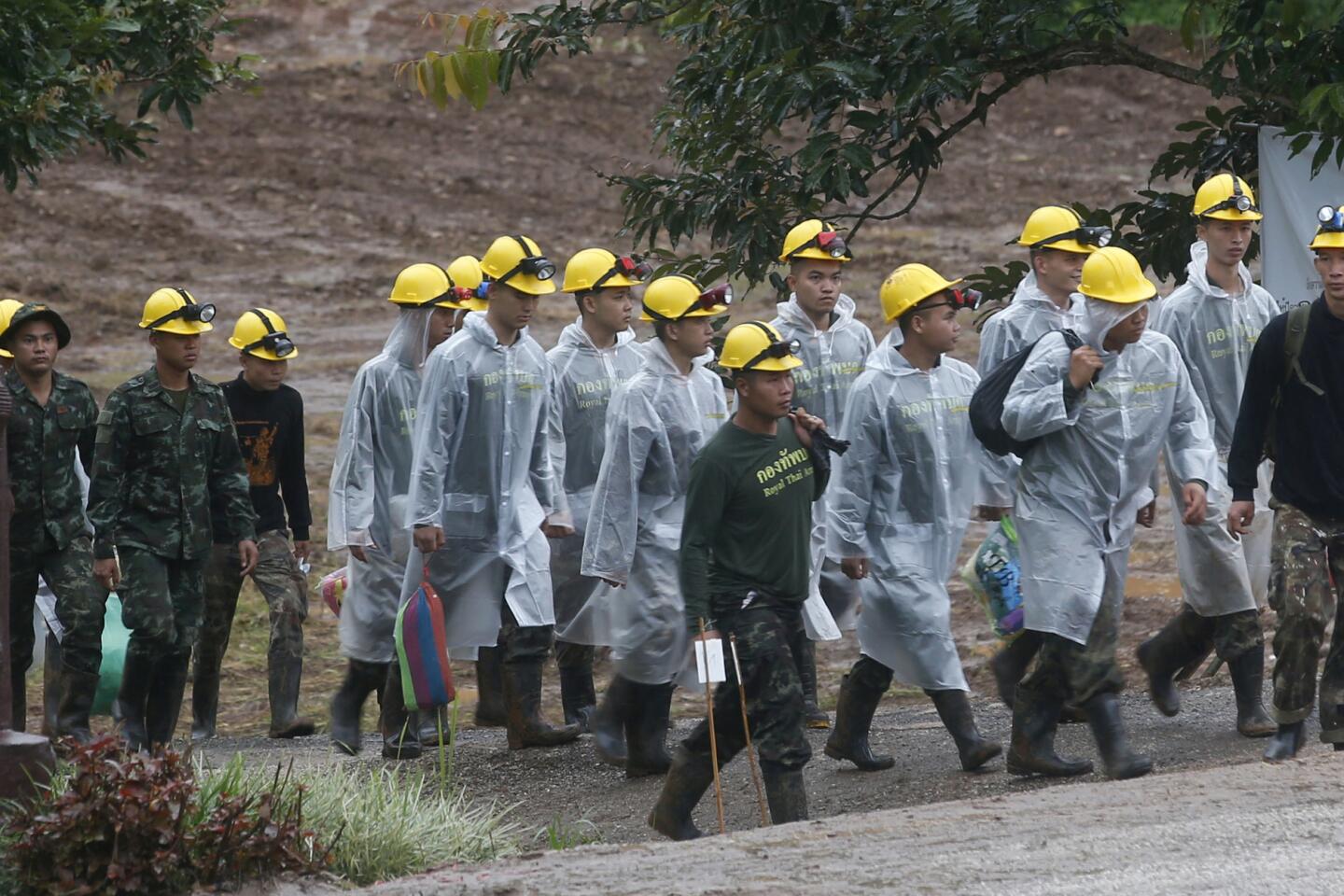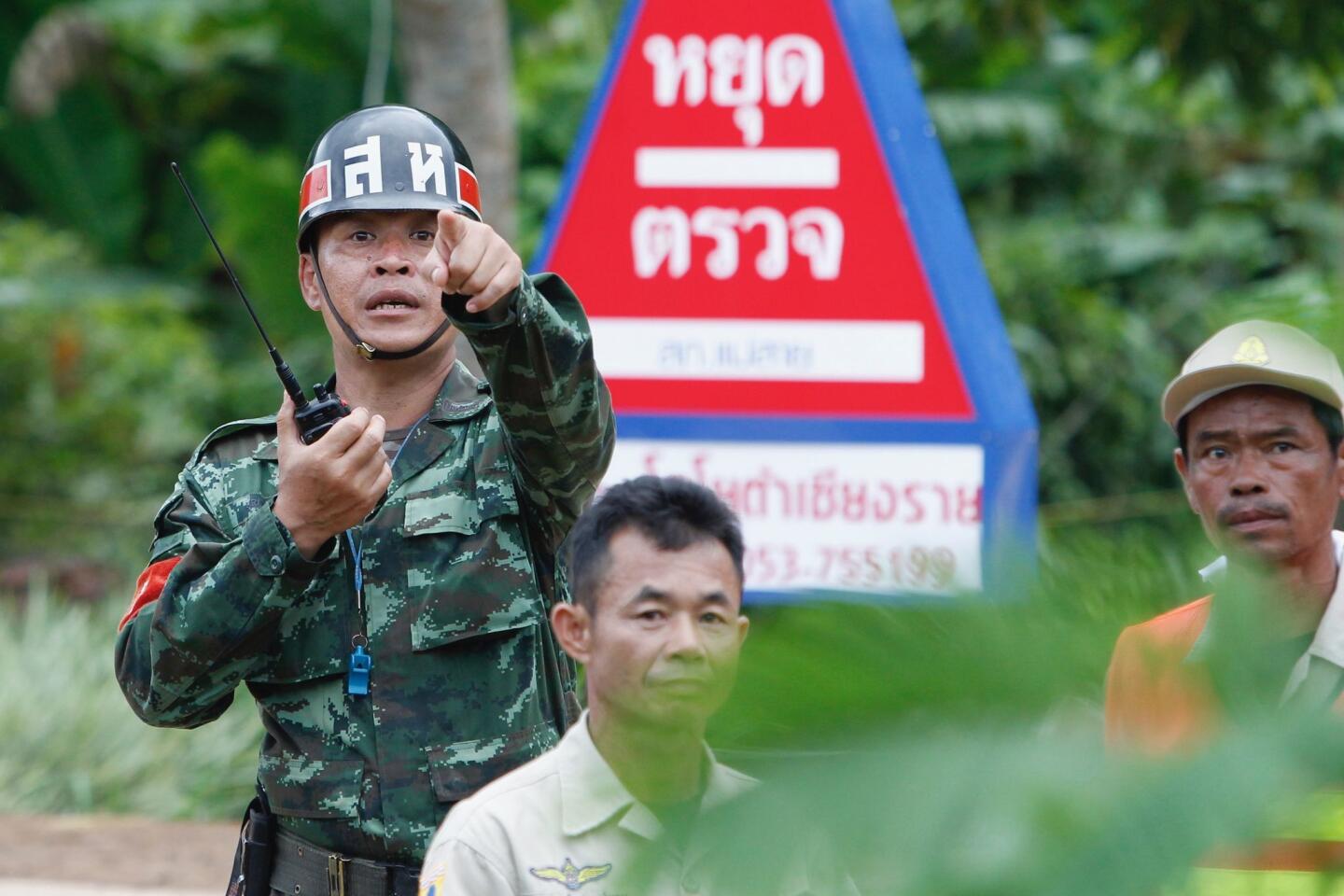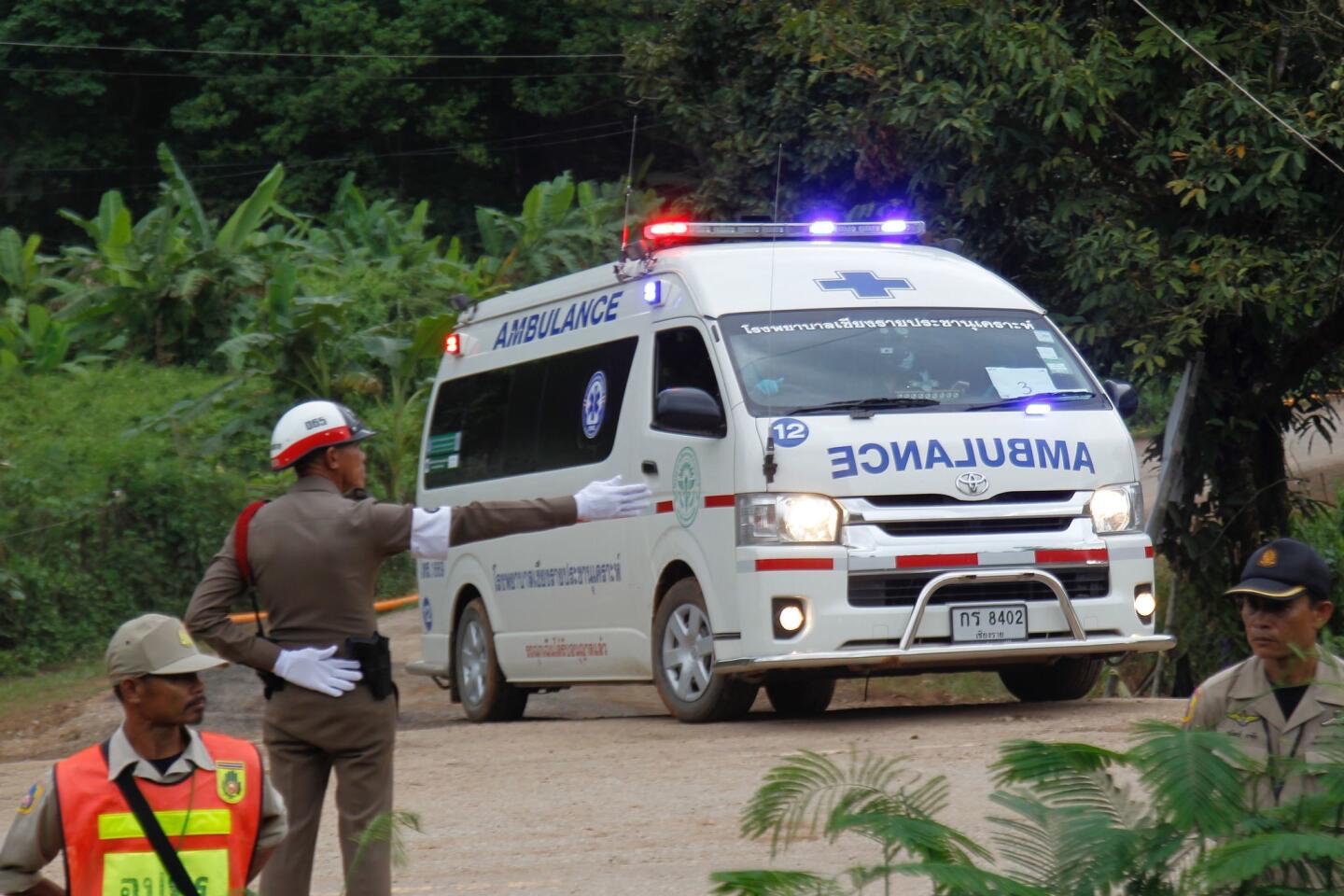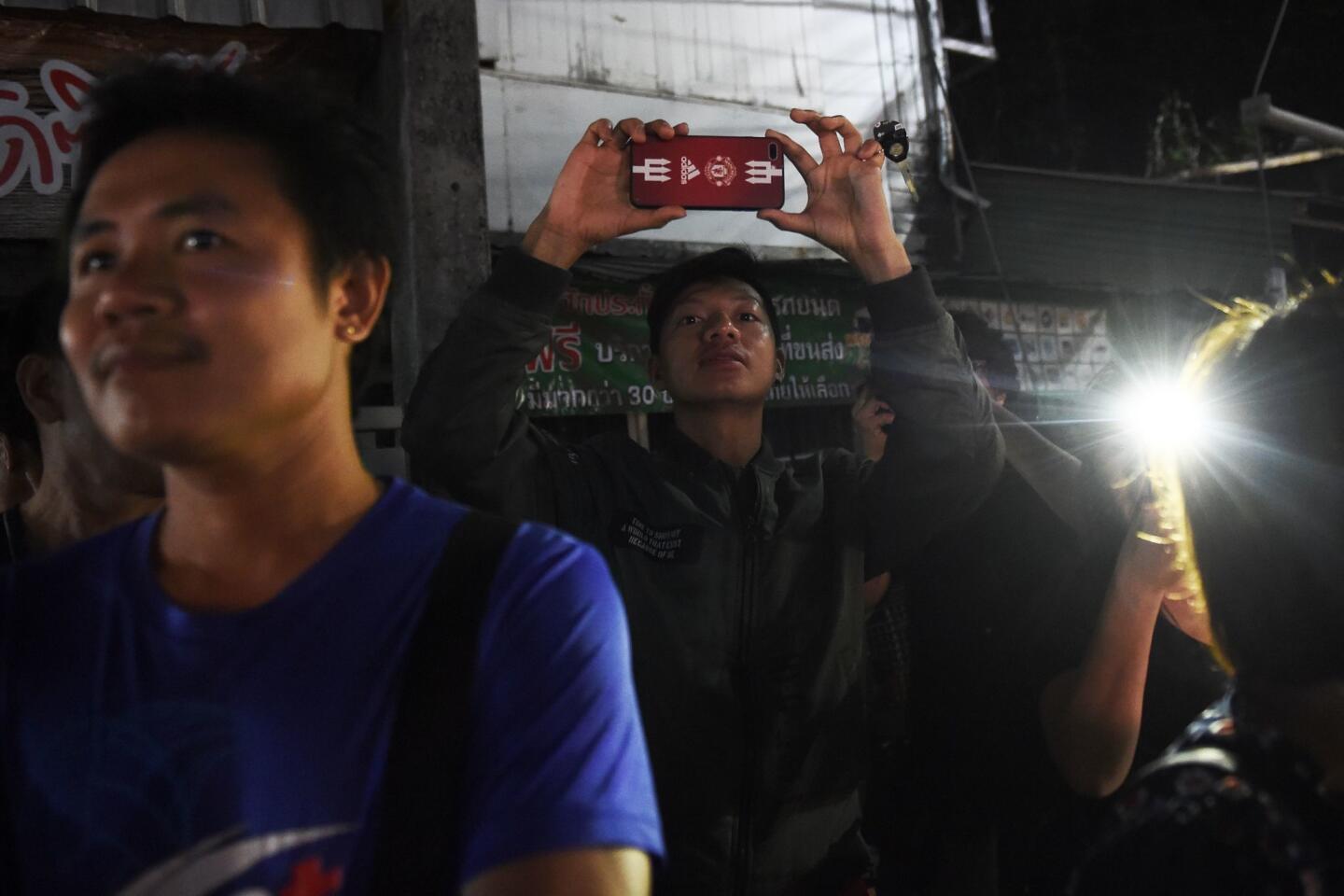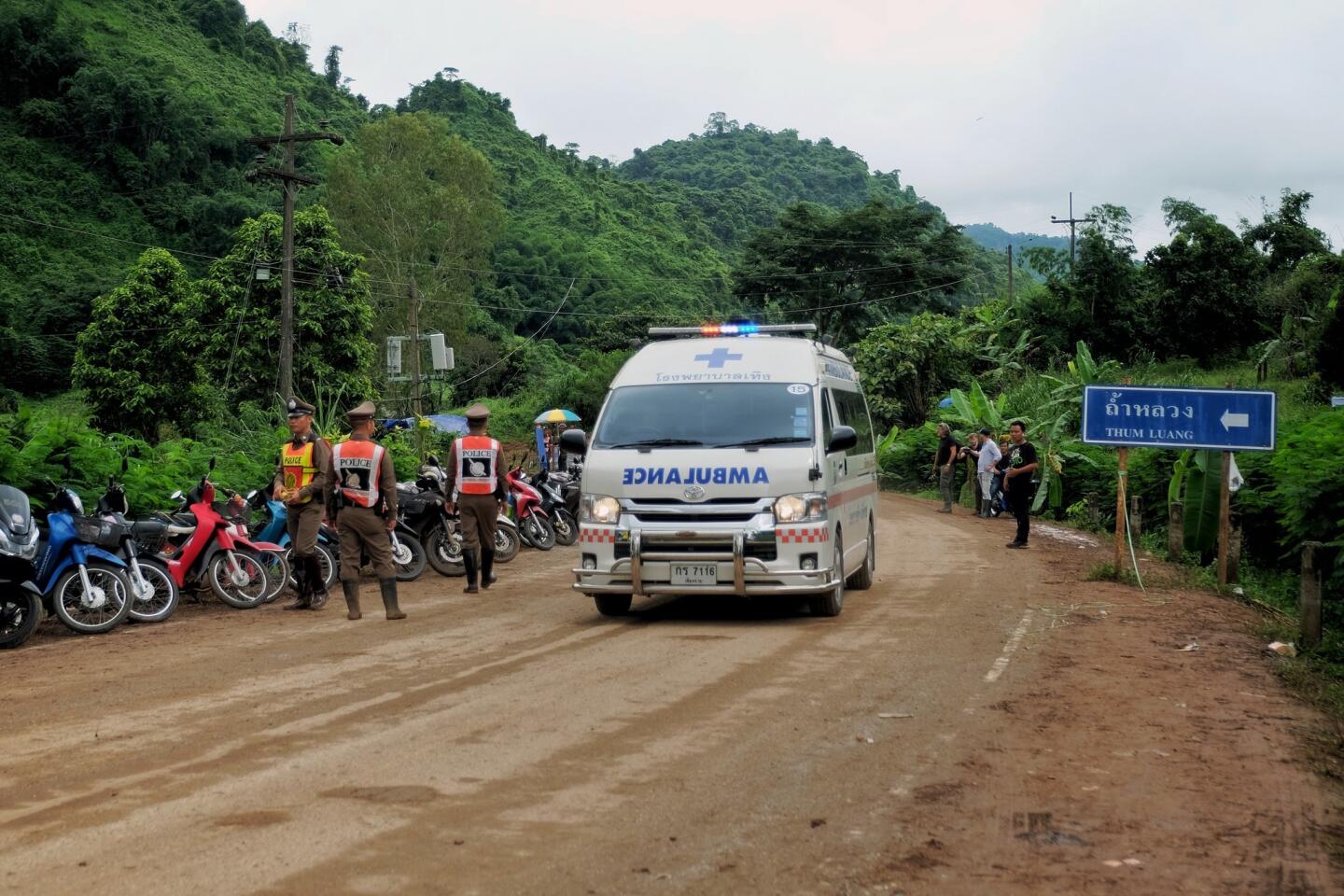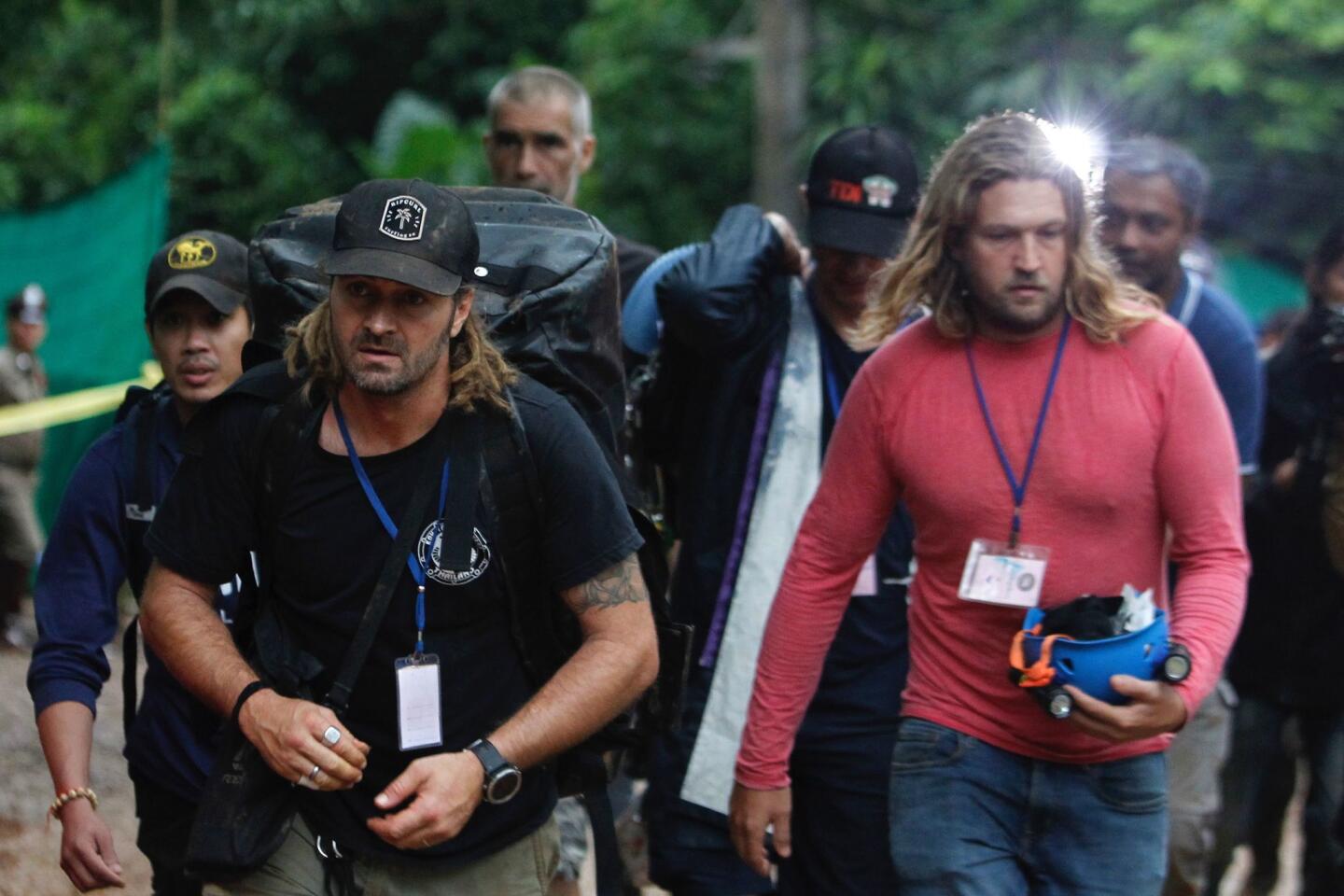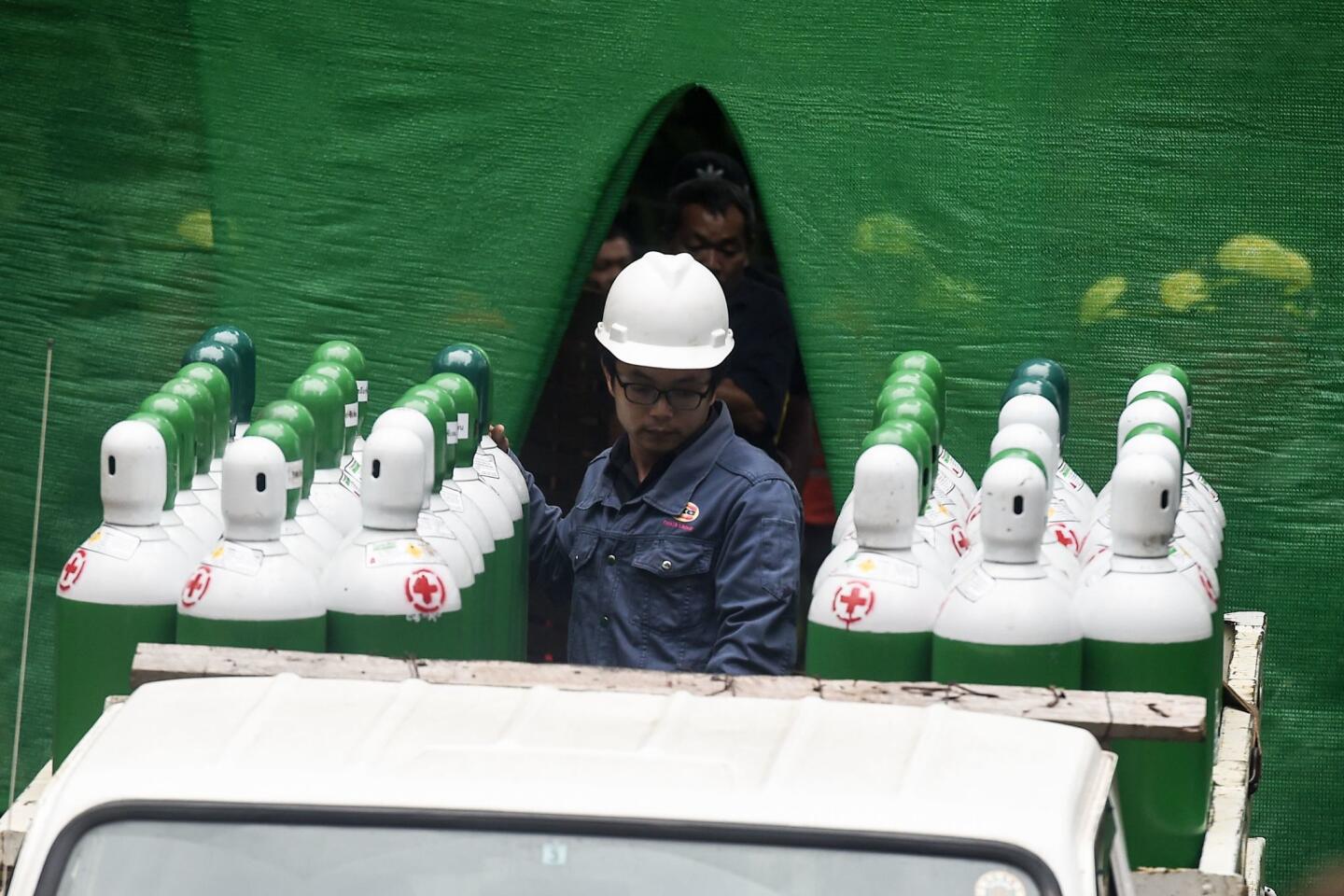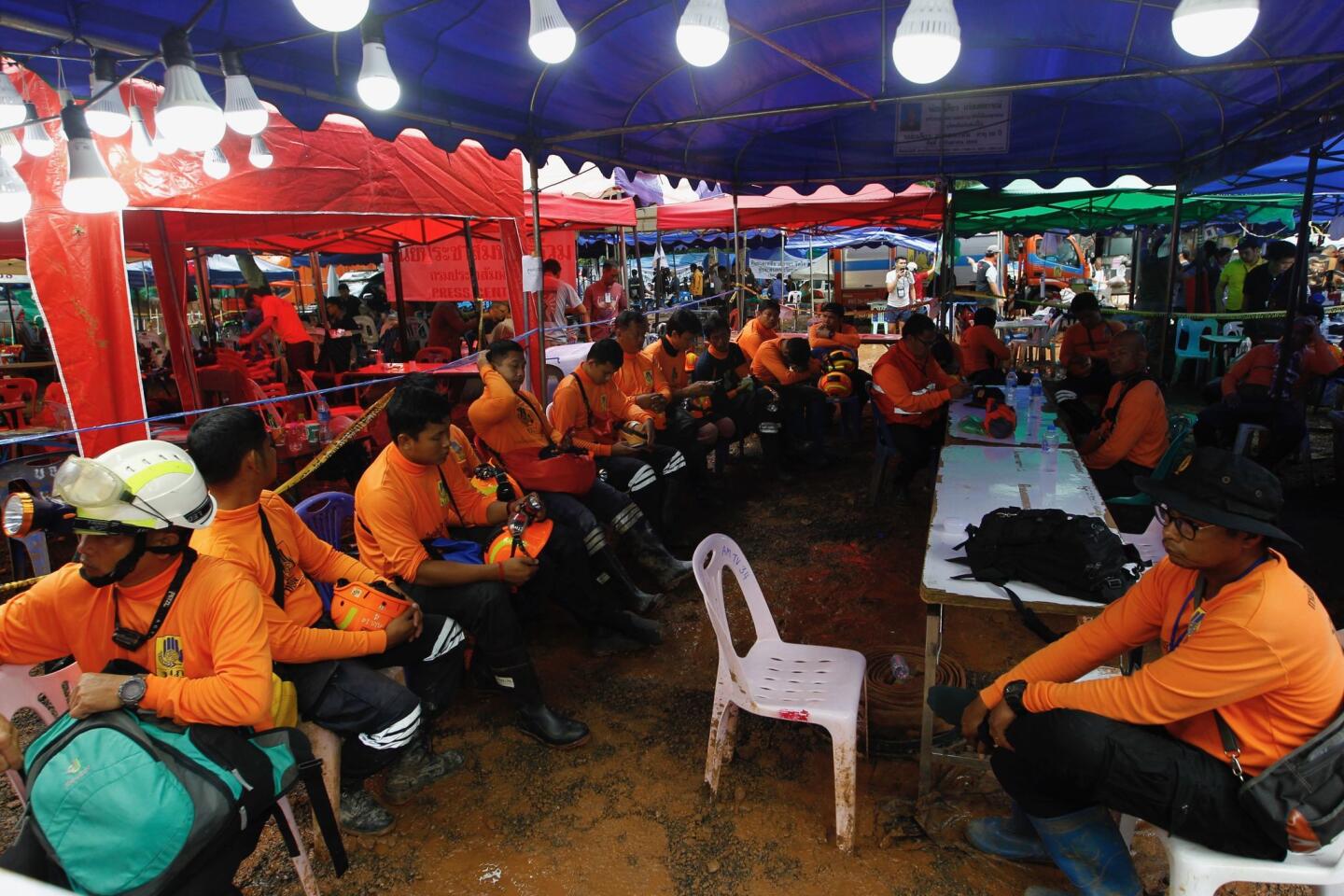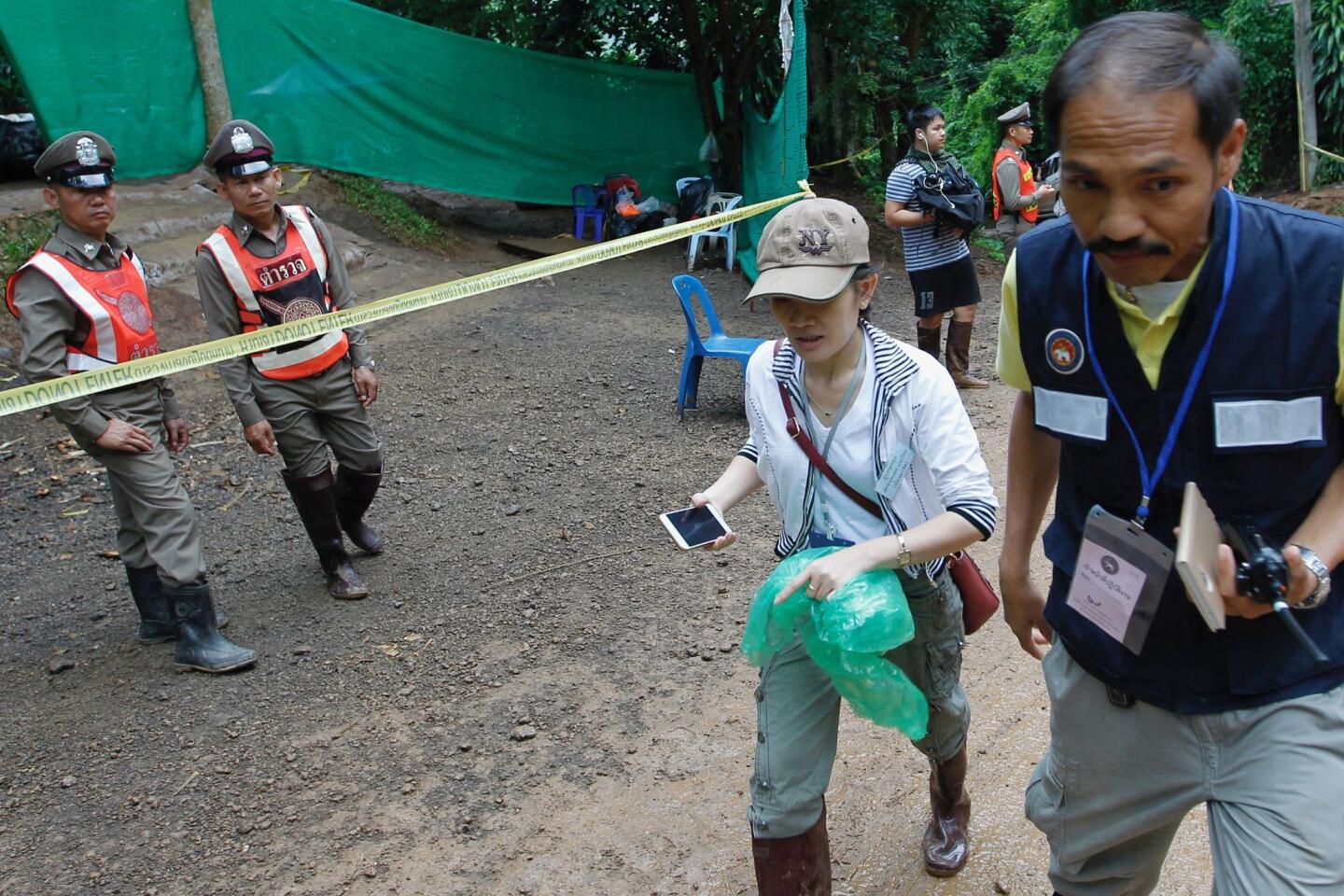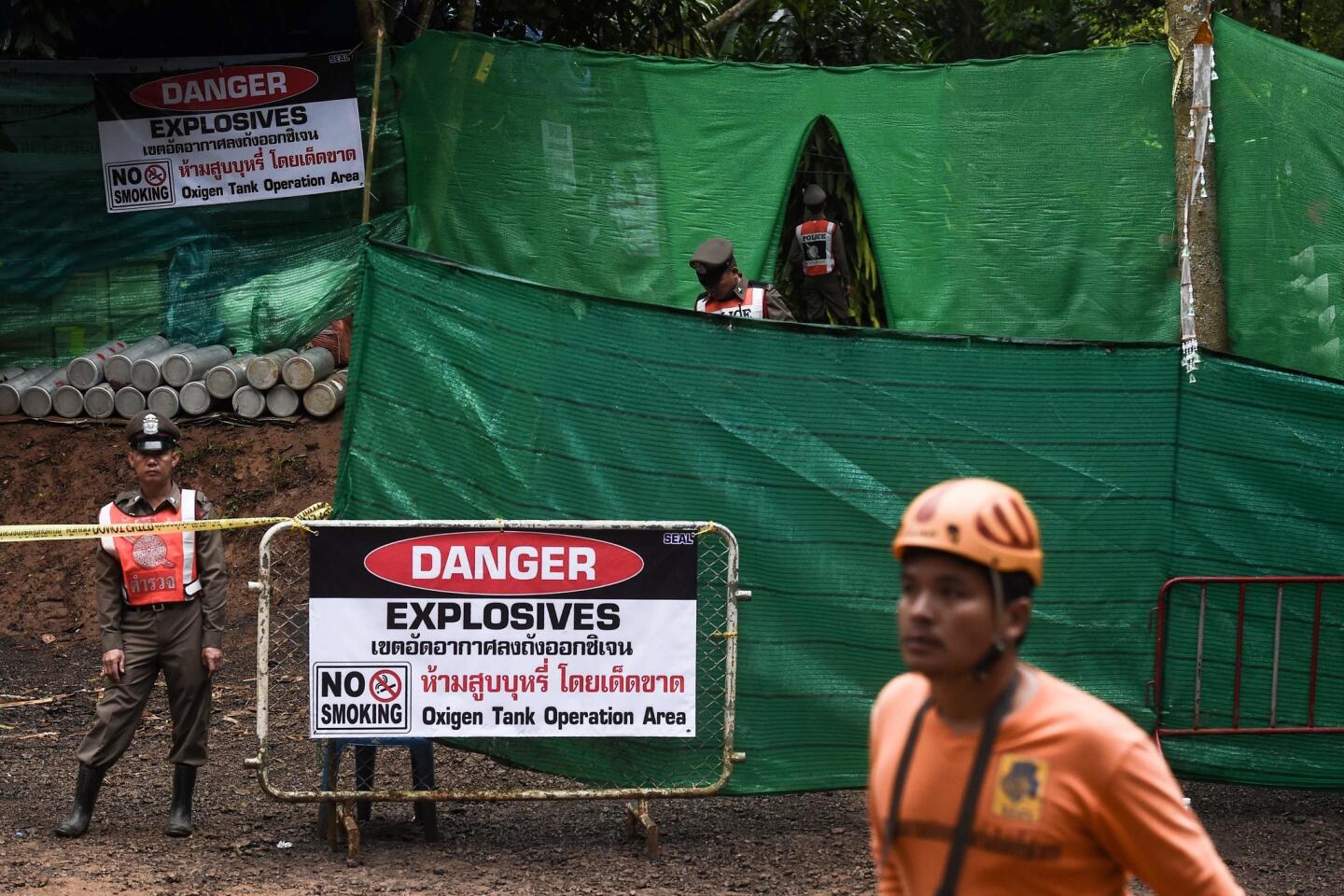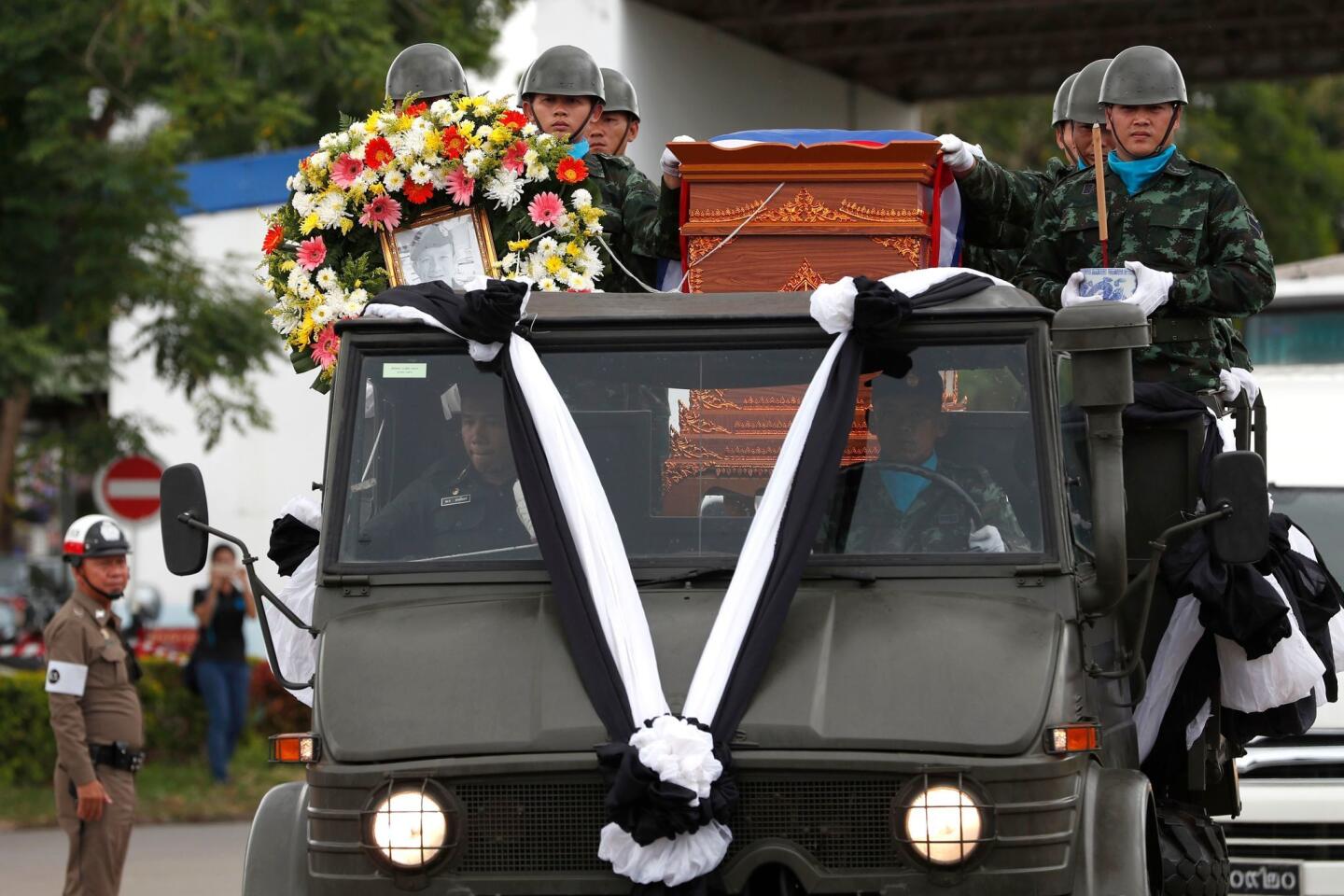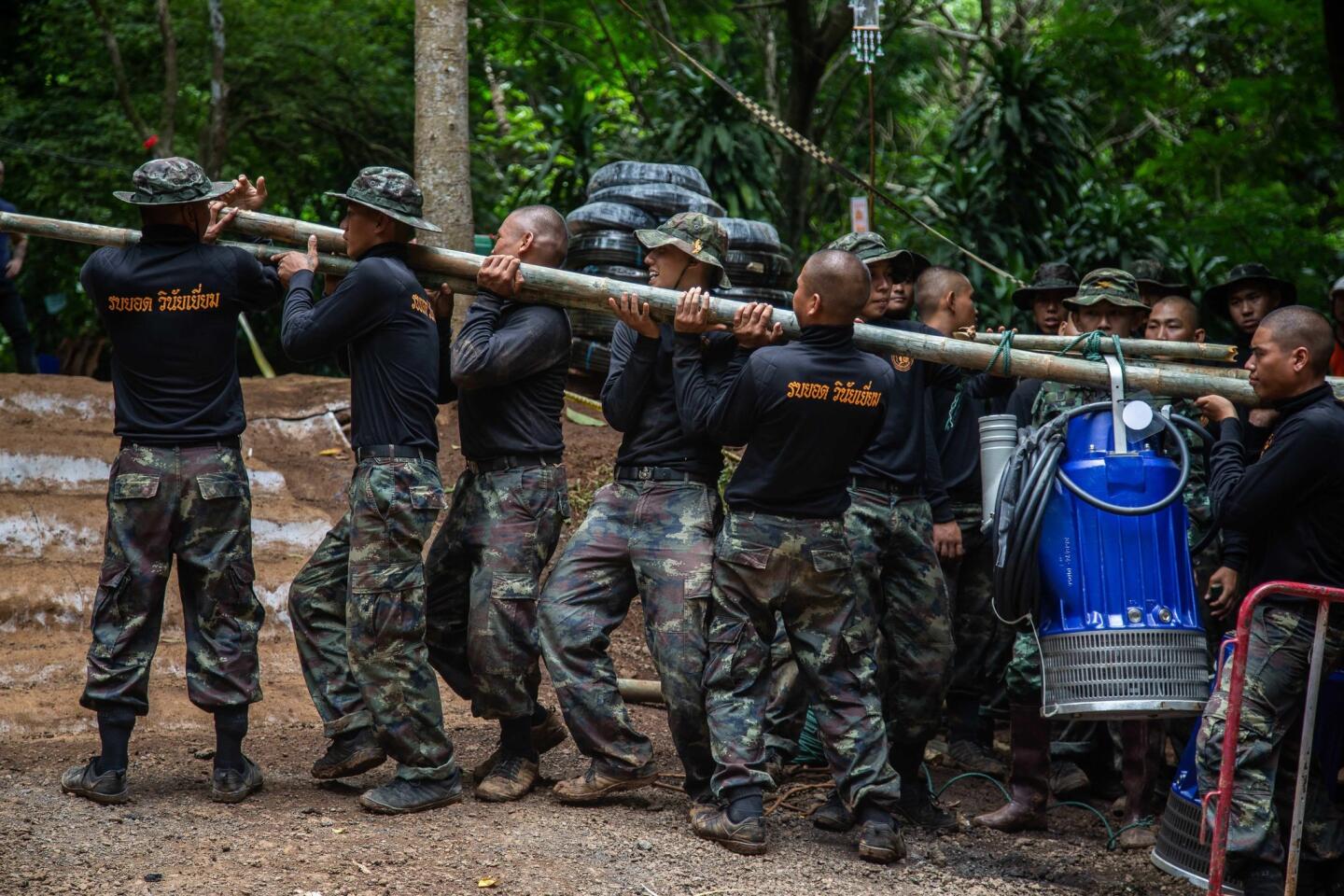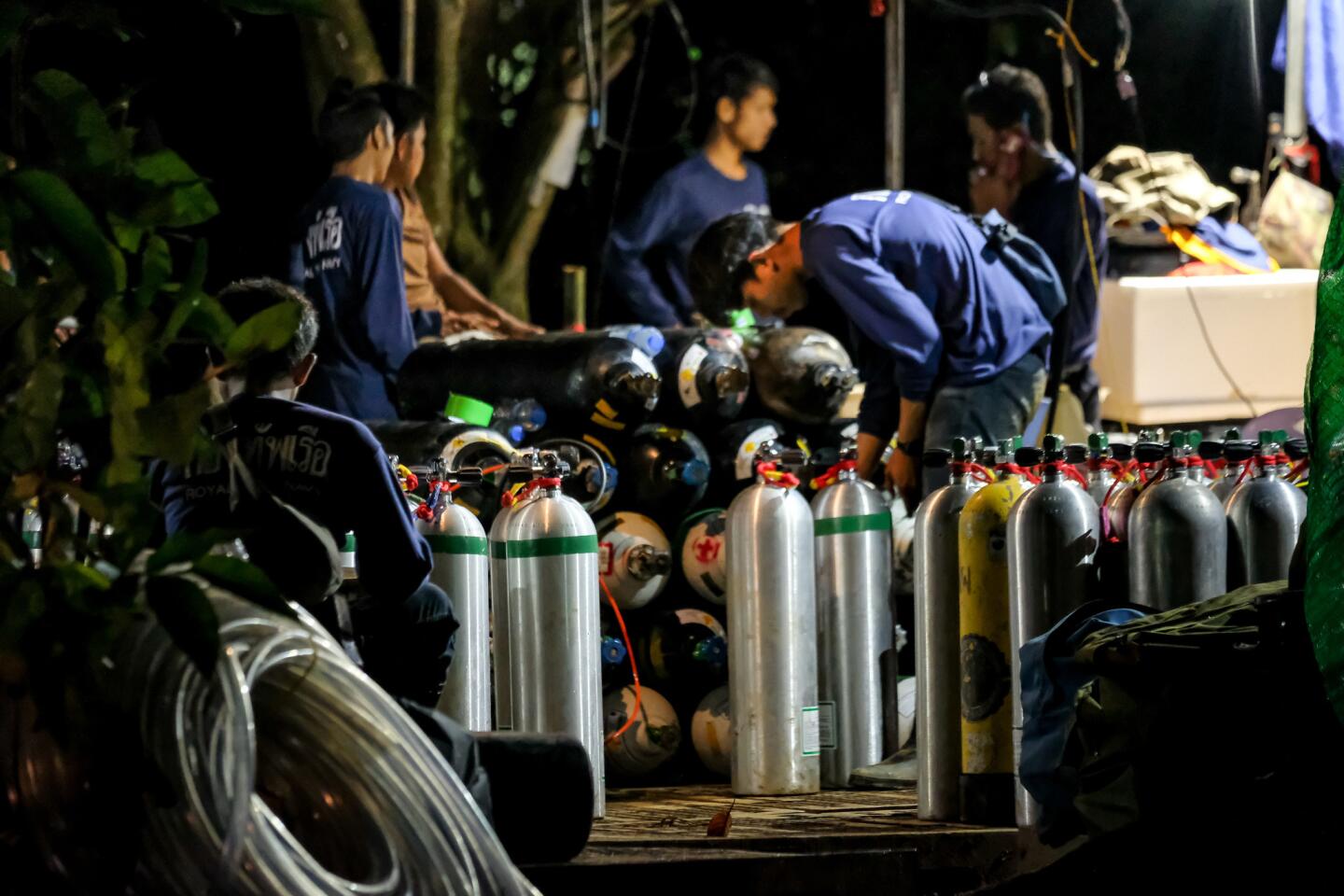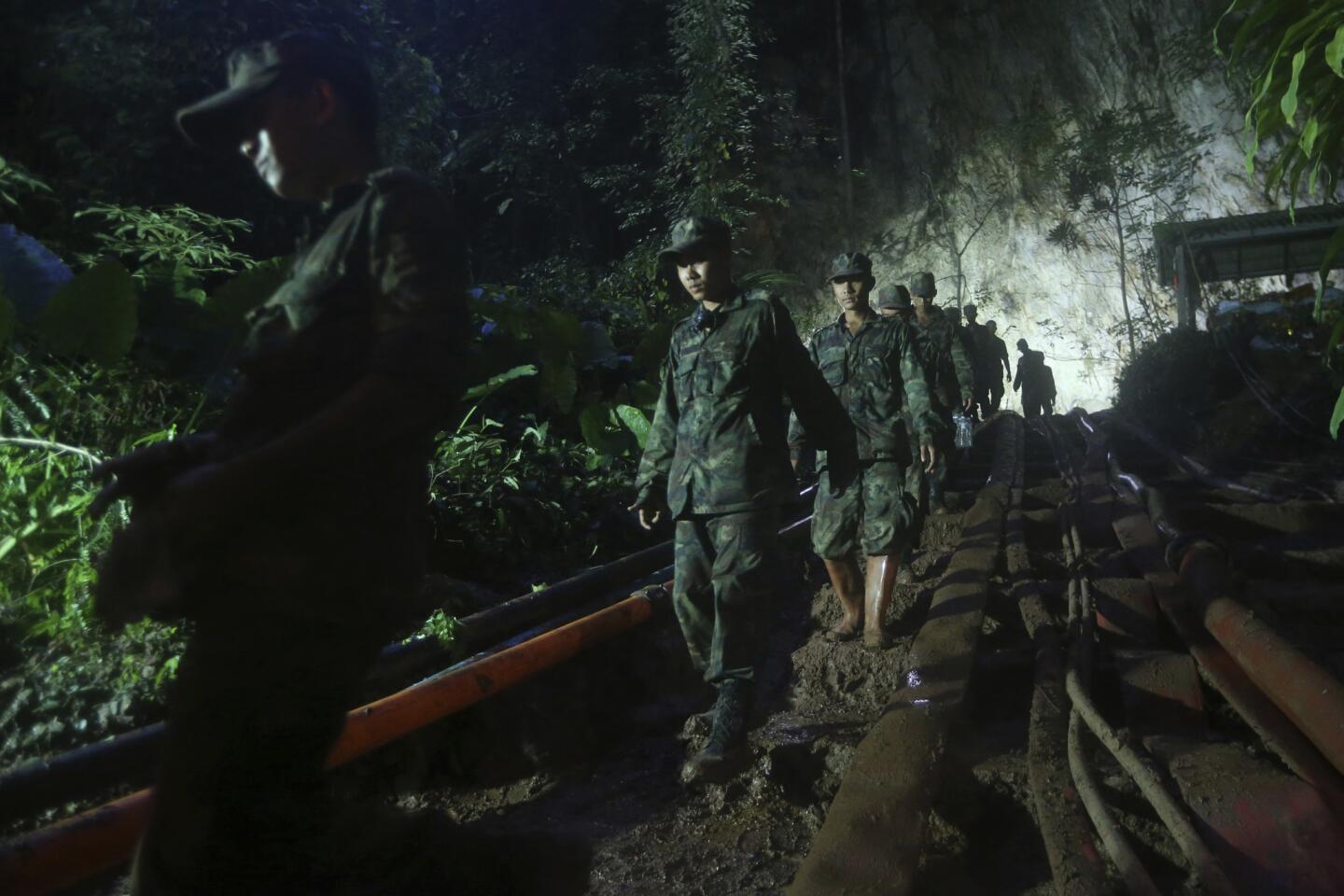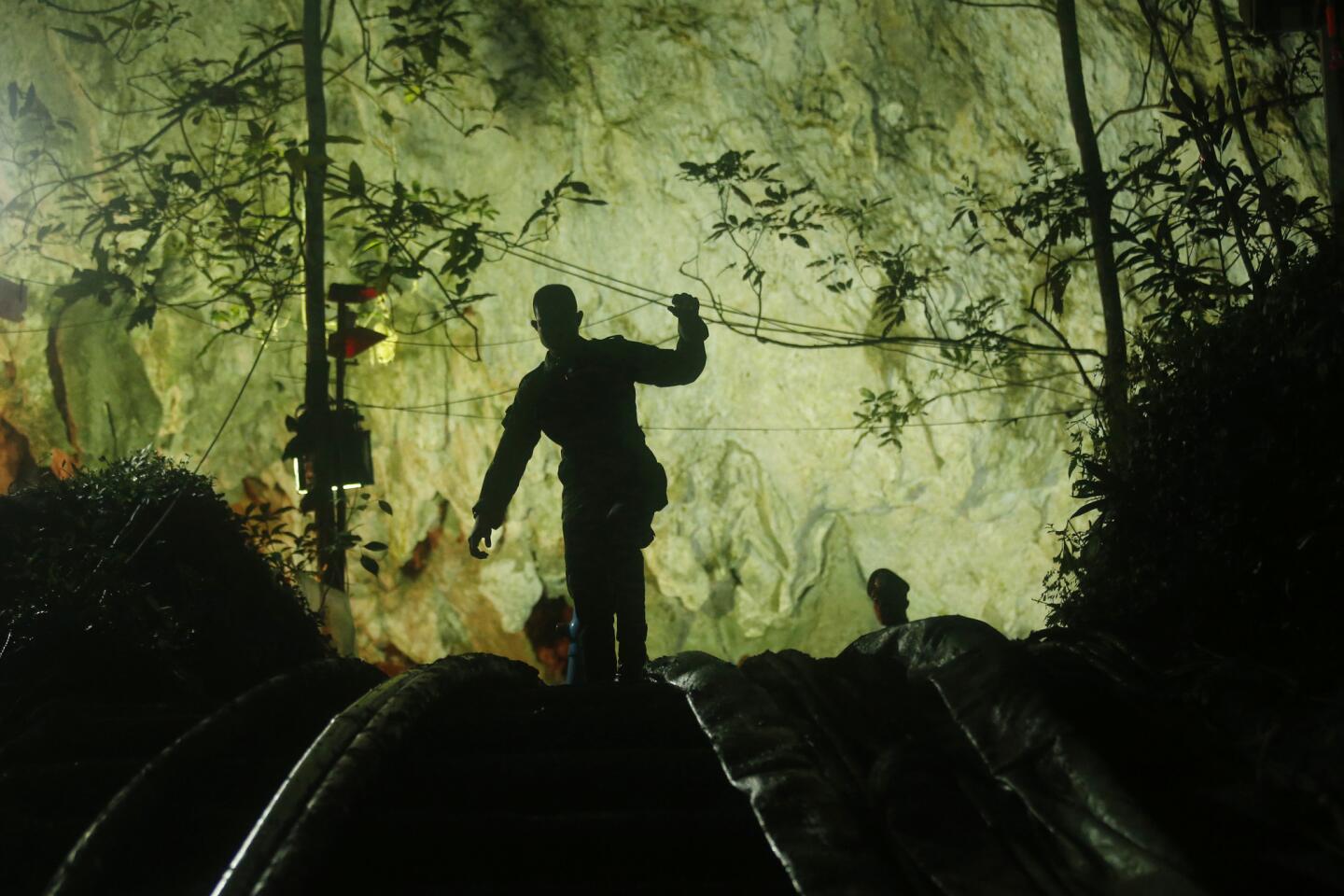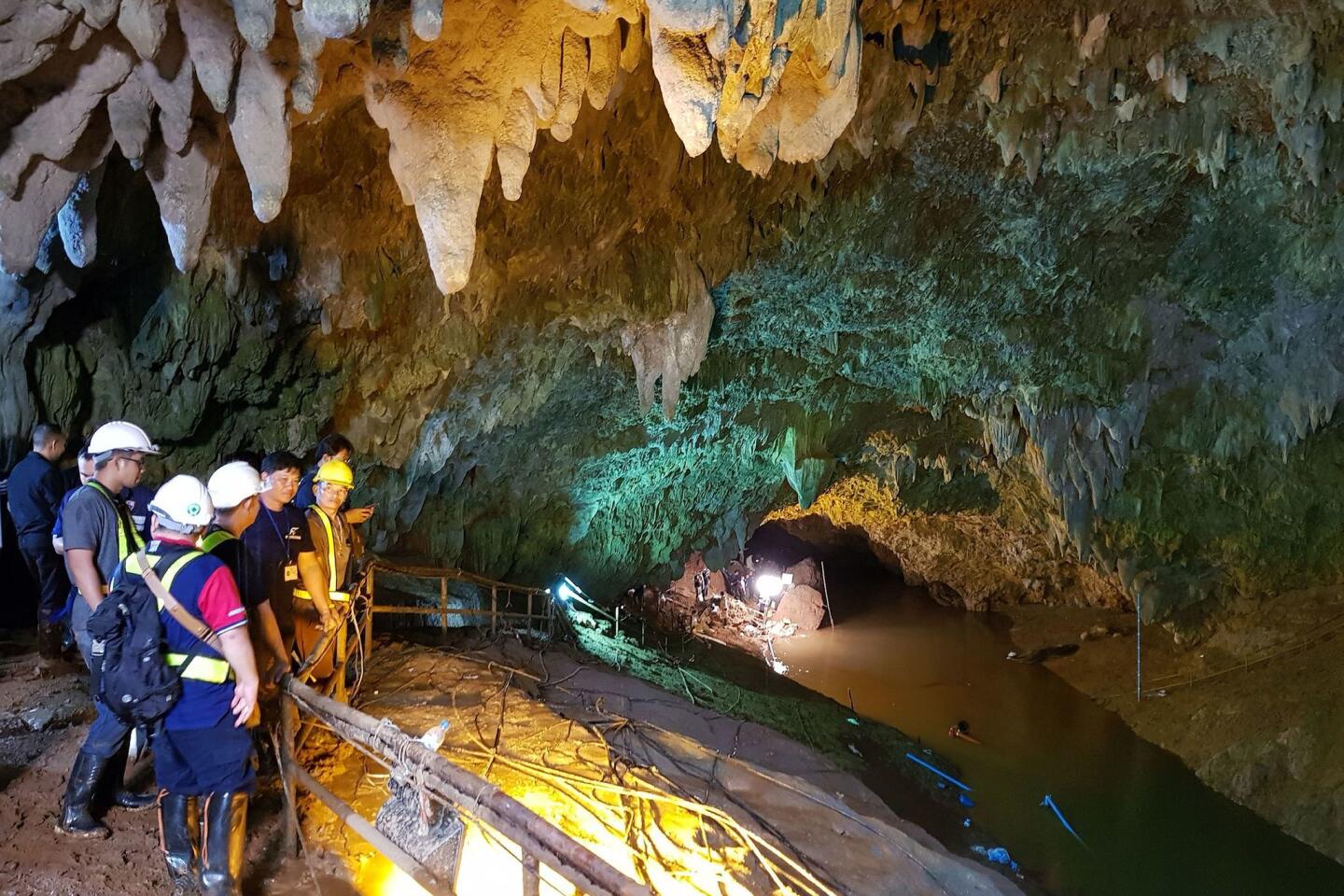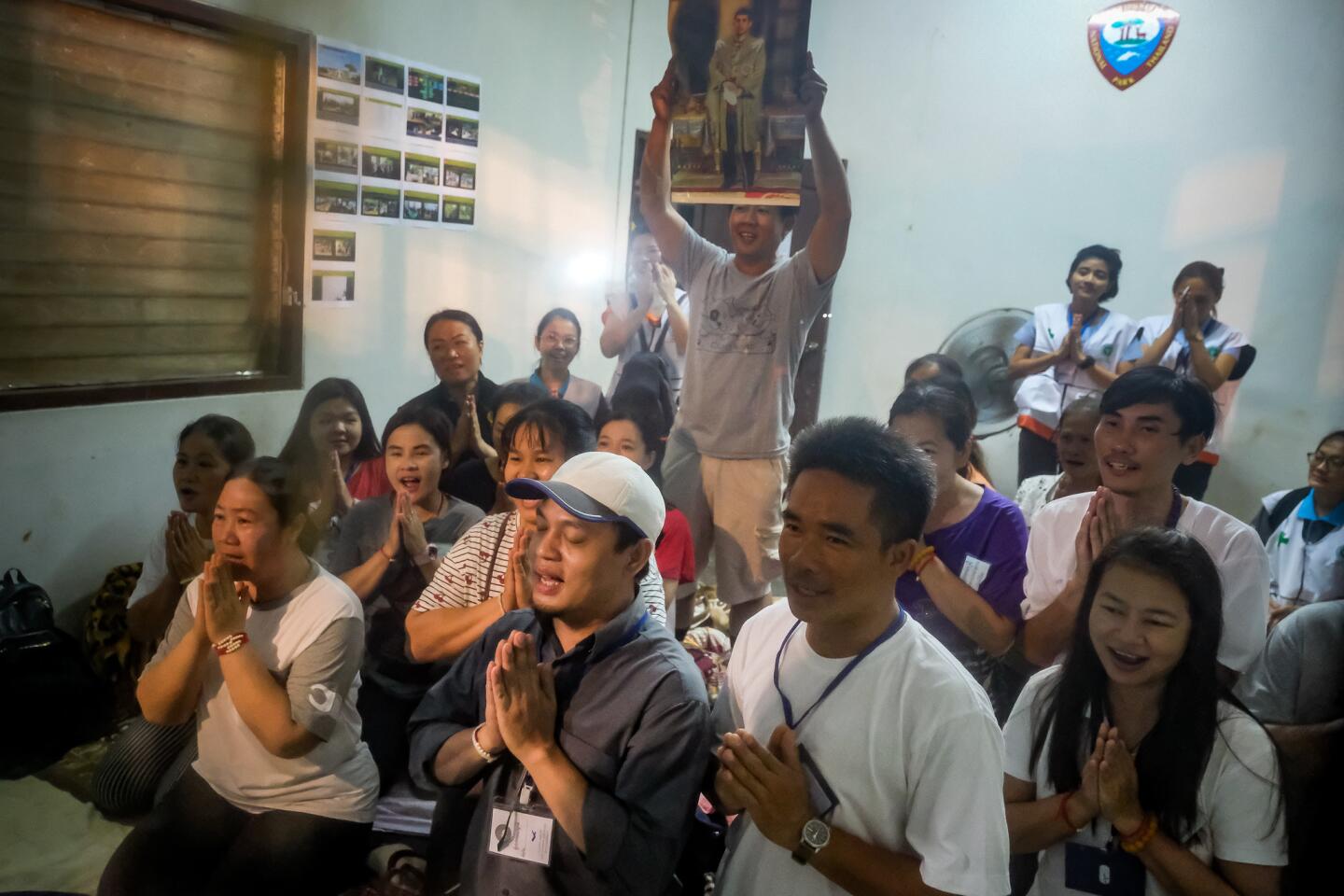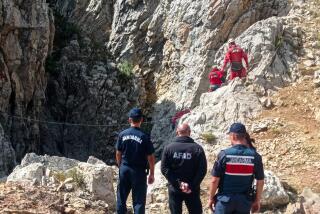Rescue mission seeking to free trapped Thai soccer team may face danger from weekend storms
Reporting from Mae Sai, Thailand — The high-risk mission to extract 12 boys and their soccer coach from deep inside a flooded cave in Thailand faced growing fears Friday that weekend storms could make a complicated rescue almost impossible.
Rain forecast for northern Thailand could refill the Tham Luang Nang Non cave with water, and alternative ways to bring the group out — through an opening in the mountainside above, or by drilling into the rock face — were not bearing fruit, authorities said.
The boys and their 25-year-old coach were on a dry ledge inside the cave and were being looked after by Thai Navy Seals and trained in the basics of diving in case they have to swim to safety, but it was unlikely that the group could remain there much longer.
A former Thai Seal lost consciousness while moving oxygen tanks underground at about 1 a.m. and could not be revived, officials said. It was the first fatality in a rescue effort that has drawn divers and volunteers from several countries and captivated people around the globe.
“Circumstances are pressuring us,” Thai Seal commander Arpakorn Yookonkaew told a news conference. “We originally thought the boys could stay safe inside the cave for quite some time, but circumstances have changed. We have a limited amount of time.”
Arpakorn and other officials did not give a timeline for when an evacuation might begin. Getting to safety requires a roughly five-hour dive through murky waters and suffocatingly narrow passageways — difficult for even experienced divers — to a point closer to the mouth of the cave where the group could be brought out on stretchers.
“We try to set the best plan we can to bring them out,” said the provincial governor, Narongsak Osotthanakorn. “We are afraid of the weather and the oxygen in the cave, but we have to try to set the plan and find out which is the best [way].”
More than two miles inside the cave, where they are being fortified with high-protein gels and foil warming blankets, the boys have been practicing wearing diving masks and breathing under the instructions of the Seals.
Officials said each boy would be accompanied by two or three rescuers, and that not everyone would need to be evacuated at the same time.
But the boys — ages 11 to 16 — are thought to be novice swimmers at best, and frail after having spent nearly two weeks underground since they entered the cave after soccer practice June 23 and were trapped by floodwaters.
The risks of the mission became apparent with the death of the former Thai Seal, officials said.
The rescuer, identified as 37-year-old Saman Gunan, had been moving oxygen tanks along the path that rescuers have been using to reach the boys. The tanks allow divers to stay underwater longer during the treacherous dive.
At one tight corner known as T-junction, there is almost zero visibility, said Ivan Karadicz, a Danish diving instructor participating in the effort.
“You can only see 20 centimeters [about 8 inches] in front of you,” Karadicz said. And the point is so narrow that only one diver can usually pass at a time, meaning a boy might have to negotiate that point without the aid of a rescuer, he said.
The number of rescuers in the cave complex, beneath a mountain in rugged, tropical Chiang Rai province, has also lowered oxygen levels inside.
High-powered pumps are clearing 50,000 gallons of water out of the cave every hour, helped by relatively dry weather over the past week. But rescuers have still not identified every point where water flows into the six-mile-long cave.
“We still have a lot of water at Chamber Three,” said the director of the provincial natural disaster department, Komsan Suwanampha, referring to a point closer to the cave mouth where the Seals have set up a base of operations, and where rescuers hope to bring the boys out by stretcher.
Narongsak, the provincial governor, said crews were looking for shafts and sinkholes that could offer a way to drill into the rock face. He said they found 18 sinkholes, one of which was about 1,300 feet deep, but drilling deeper proved impossible.
Thai officials were studying the 2010 rescue of 33 miners in Chile who were trapped when a copper mine collapsed, and brought to the surface by a capsule through a specially drilled borehole.
“We’re trying to work out how long it would take” to drill an escape hole from scratch, Narongsak said. “We used the Chilean scenario — they took two months to get people out.”
A team of experienced Thai mountain climbers — members of a community who scour hillsides collecting bird’s nests — also joined the effort to look for openings in the mountain.
Nasan Konkayan, team leader of the bird’s nest collectors, said they hiked from the top of the cave to where they believed the boys were stuck below, but could not find an opening.
“We will come back tomorrow,” Nasan said.
Special correspondent Styllis reported from Mae Sai and Times staff writer Bengali from Lahore, Pakistan.
Shashank Bengali is South Asia correspondent for The Times. Follow him on Twitter at @SBengali
More to Read
Sign up for Essential California
The most important California stories and recommendations in your inbox every morning.
You may occasionally receive promotional content from the Los Angeles Times.


